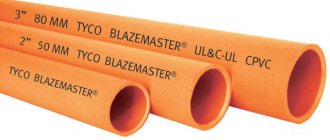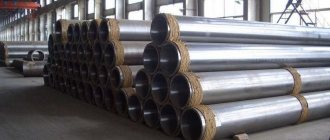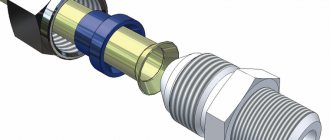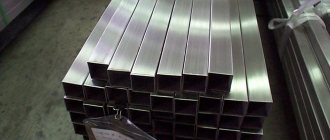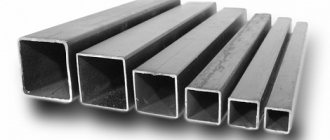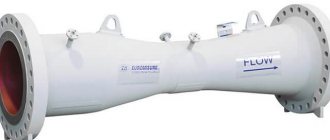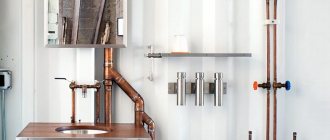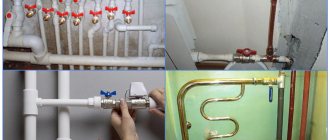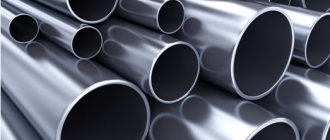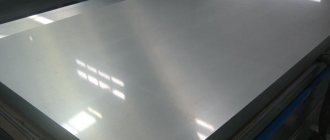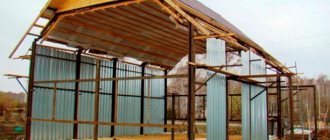Viniplast is a modified polyvinyl chloride, obtained by adding stabilizers, dyes, lubricants and resins to its structure.
Plastic water pipes
It is characterized by increased resistance to aggressive environments , therefore it has received a wide range of applications for the installation of sewerage, electrical wiring, ventilation and water supply systems.
What is vinyl plastic
In fact, vinyl plastic is a modified, well-known perchlorovinyl, to which are added:
- Stabilizers;
- Dyes;
- Lubricants;
- Perchlorovinyl resins.
As a result of all these additives, the material is more resistant to high temperatures, aggressive environments and ultraviolet radiation. It must be said that vinyl plastic is also called unplasticized polyvinyl chloride, since its composition contains a low content of plasticizers - no more than 10 percent. Thanks to this, the pipes are more rigid.
The same polyvinyl chloride, but with a higher content of plasticizers (up to 50 percent), is used in the manufacture of plastic decorative panels, vinyl leatherette, which is usually used for furniture upholstery, and some other products.
It should be noted that the low plasticizer content does not make vinyl plastic pipes brittle. Examples of bending strength include vinyl spinning rods and corrugated pipes.
Corrugated vinyl plastic (UPVC) pipe
Advantages and disadvantages of vinyl plastic
The main advantages of the material include the following:
- very plastic, does not collapse in case of small deformations;
- resistant to acid, alkali and other aggressive chemical compounds;
- no hazardous chemicals are released when heated;
- does not allow electricity to pass through;
- durable and fire resistant;
- technologically advanced and easy to process, therefore widely used in industry;
The possibility of connecting products in several ways is attractive: gluing, welding, drilling holes. Easily welded with electrodes designed for working with metal.
Pipe installation
Like any material, vinyl plastic also has disadvantages. But they rather relate to its features and operating conditions:
- Unresistant to aromatic hydrocarbons, highly concentrated nitric acid, solvents and essential substances.
- Impossibility of storing products in open spaces. And also, at temperatures exceeding 35 degrees and near heating devices.
- If vinyl plastic was transported at high temperatures, it is important to keep it for a day at 20 degrees.
Features of vinyl plastic pipes
Advantages
The technical characteristics of vinyl plastic pipe are very attractive.
In particular, the following advantages can be highlighted:
- Possibility of operating the pipeline at temperatures from -10 degrees Celsius to +50.
- The service life can reach fifty years.
- Light weight.
- Chemical resistance.
- Easy to install.
- Low price.
- Sealing of joints, which is achieved through the presence of sockets with rubber sealing rings or welding.
- Resistance to corrosion and rotting, which increases the service life of products.
- Relative fire resistance, due to which corrugated tubes can be used for laying electrical networks.
- Environmentally friendly - the material is not harmful to human health.
Flaws
The only serious disadvantage of vinyl plastic is its fragility at low temperatures. This somewhat limits the outdoor use of such pipelines.
Corrugated pipes for laying cables
Manufacturing of sewers
For work with sewers, vinyl plastic P 51613-2000 is used. Since sewer wiring must have the following qualities:
- elongation of the material when heated is more than five percent;
- avoiding softening at 78 degrees;
- smooth both internal and external surfaces of the elements.
The requirements for gravity sewerage are different. To build a sewer system in a private house, they work with corrugated products. Despite the fact that according to the State Standard it is prohibited to use materials with a corrugated surface for such work. To build a gravity system, you need a pipe size that matches the amount of water consumed.
Sewer wiring is resistant to rust, chemical deposits inside, lime, etc. It will not be damaged by mechanical stress or high humidity. Connections with sockets are also used for installing sewer systems.
Application area
Viniplast is especially widely used in the construction of process pipelines, which is explained by its resistance to such chemicals as:
- Acids;
- Alkalis;
- Solvents;
- Salt.
However, in addition to process pipelines, it is also often used for the following purposes:
| When laying electrical networks | As cable channels |
| When installing ventilation systems | As exhaust shafts and ducts |
| When installing sewers | Both in gravity and pressure systems |
| When installing cold water supply | As an internal water supply |
Pipes for external sewerage
Installation of water pipelines
To supply buildings with water, vinyl plastic is also used. It is strictly permissible to use it when installing cold water pipes. The diameter of the conductor is selected taking into account the number of consumers and the amount of water consumed on the site.
To make a plumbing liner, use a diameter of 16 mm. The piping system must be sealed. It is built in by “cold welding” or a low-temperature soldering iron.
Kinds
Since the scope of application of vinyl plastic pipes is quite extensive, they come in different types.
In particular, products may vary:
- Diameter;
- Number of layers – there are single-layer and double-layer;
- Coloring;
- Rigidity;
- Surface – can be smooth or corrugated.
Advice! In private housing construction, corrugated vinyl plastic is often used to install external sewage systems. However, according to building codes, smooth orange pipes should be used for outdoor sewerage.
When choosing pipes, you must keep in mind that different requirements are imposed on products for water supply and non-pressure sewerage. So, according to GOST 51613-2000, pressure pipes must have the following characteristics:
| Maximum elongation when heated | No more than 5% |
| Maximum elongation at break | 25% |
| Heat resistance | The material should not lose its hardness and strength at temperatures up to 78 degrees Celsius |
| Resistance at a pressure inside the system of 35 MPa and a liquid temperature of 20 degrees Celsius | At least 100 hours |
PVC-U pressure pipes
When installing non-pressure sewers, there are no requirements for the strength of the pipeline.
The only thing is that the products must:
- Maintain the pressure on the pipe walls declared by the manufacturer and the specified maximum temperature.
- Fits standard sizes;
- Resistant to moisture and chemical elements.
Installation
Instructions for installing a pipeline largely depend on its type. For example, installation of a water supply system will be carried out using a low-temperature soldering iron. The process looks the same as when working with polypropylene pipes.
The assembly of sewer systems, as mentioned above, is carried out using the socket method. In this case, reliable sealing of the joints is ensured using silicone sealant. In general, any type of installation can be done by every home craftsman with his own hands.
The photo shows the installation of the coupling
Advice! To connect vinyl plastic with other pipeline materials, special couplings should be used.
When installing a full-fledged pipeline, with bends, turns, etc., regardless of its type, all kinds of fittings are used. Their diameter must correspond to the diameter of the pipeline.
In general, we can say that vinyl plastic does not differ in any features of pipeline installation.
Installation features
Vinyl plastic pipes are installed depending on their type and purpose. In water supply and drainage systems, special attention is paid to the tightness of the structure.
To ensure this, it is recommended to use the “cold welding” method, since it eliminates the possibility of damage and ensures maximum performance between parts. Sewer systems can also be further sealed using glue or rubber seals.
Vinyl plastic pipe is deformable. The safe radius of its bending can reach 100˚. However, it is worth considering that arbitrary deformation of the product leads to a decrease in its diameter inside the bend, and also leads to the appearance of irregularities, therefore a square is used to bend the product. Its installation is simple and quick to implement.
Installation of pipes for electrical wiring is carried out both indoors and outdoors. Before starting work, they are marked, cut, chamfered, pipes are deformed and connected , as well as their marking. Bend 25 mm products for wiring installation only in a heated state. The operating temperature range is 110-130˚С.
To prevent products from collapsing, springs are introduced at bends, the diameter of which is slightly smaller than the diameter of the pipe. During the hot casing process, the products are tightly inserted into the socket until it stops. Then it is heated. When it begins to cool, it tightly covers the pipe due to compression.
Welding plastic pipes (video)
Welding vinyl plastic pipes
When heated to 220˚C, vinyl plastic goes into a fluid state, so welding is often used to connect products made from this material. To prepare them for work, local and short-term heating can be used. This will eliminate the possibility of damage to them.
Excessive heating up to 300˚C is undesirable, as it can cause destruction of the structure of the product.
Even if the welding is performed correctly, the physical properties of the seam will be significantly inferior to the body of the product, although the chemical properties will be identical.
There are two types of joints obtained by welding: butt and socket. The butt joint is effective in rod welding. It will be used if the thickness of the product is more than 4 mm. Among the disadvantages of this method are low productivity and a weld strength coefficient of only 0.5-0.7, and it is uneconomical.
Recommendations for choosing material
The material is transported packed in bags weighing no more than two tons. And they sell products in lengths from 4 to 12 meters.
If you decide to install a water supply or sewer system on the site yourself, you will have to purchase the material for the work. The first step is to study the purpose of each diameter and the scope of application of the corresponding types of pipes. Please consult with a knowledgeable person or the seller first.
Upon inspection, the products must be free of damage and creases. Pipes, except corrugated ones, must be smooth, without roughness or abrasions. Minor waves or streaks are allowed.
Be sure to ask for a certificate of conformity for vinyl parts. You can also inquire about the sanitary and epidemiological certificate for the product. The information contained in these documents confirms the quality of the products and their compliance with GOST.
